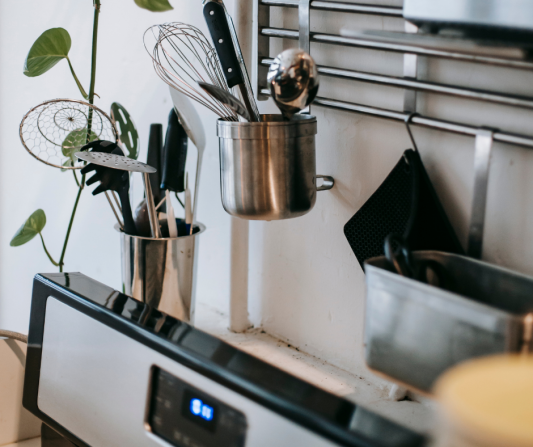 Arthritis can affect many joints within the body, decreasing the ability to bend and move well, or ongoing pain. Some people may also have increased difficulty using their hands. This can affect grip strength, grasp, and fine motor movements. All these things can stop people’s ability to complete everyday tasks and activities.
Arthritis can affect many joints within the body, decreasing the ability to bend and move well, or ongoing pain. Some people may also have increased difficulty using their hands. This can affect grip strength, grasp, and fine motor movements. All these things can stop people’s ability to complete everyday tasks and activities.
The use of assistive devices is becoming more common for people with a range of chronic conditions. They can also be very useful for people living with arthritis.
An assistive device is any piece of equipment that enables or ‘assists’ you to complete daily tasks that you need, want or have to do. This can help people to:
- Take part in more activities within the home, workplace, and community;
- make mobility safer and easier and to,
- make recreational activities and hobbies more enjoyable to pursue
So, what are some daily activities that can be affected?
There are many activities that can be affected. Daily activities commonly affected by arthritis may include:
- Bathing, showering and toileting
- Clothing and getting dressed
- Kitchen and household tasks e.g. gardening, cleaning, housekeeping
- Eating and drinking
- Home office/workplace/study
- Driving
As well as assistive devices, simple modifications to how we use every day items can also assist us in carrying out these activities and reduce pain.
Items to look for when shopping…
Some items that are readily found while shopping can also help reduce the amount of stress on your joints. Some examples might include:
- Aiming to choose products with less packaging to reduce the need for fine motor skills
- Containers in smaller sizes to reduce the carry load. Containers with tabs can also be easier to open.
- Furniture on wheels or trolleys to use throughout the house and,
- Items with long or thicker handles. These help to extend reach and reduce the need to bend, and/or can be easier to grip.
Tips for…
The bathroom
- Long handle sponges can help with washing while reducing the need to bend or reach as far
- Non-slip mats can be placed in wet areas
- A shower stool may be helpful to avoid standing for long periods of time
- Rails can be fixated next to the toilet, as well as toilet seat raisers and bidets to reduce hand movement
Dressing
- Specialised aids can assist with buttons, zips, and putting on socks or stockings
- Shoe horns are helpful when putting shoes on
- If you wear socks around the house, non-slip socks with grips on the sole can help reduce the risk of slips
Kitchen
- Store every day items where they can be easily reached
- Opt for lightweight kitchen items such as pots and pans, crockery and cooking utensils
Many products can be purchased to help throughout the kitchen such as:
- Specially designed knives and slicers
- Adapted cutlery and utensils, or ones with thicker handles
- Pot and pan holders
- Jar openers and,
- Non-slip mats
Driving
- For getting in and out of cars, there are various transfer aids, such as turn table seat pads.
- Reverse cameras can be helpful
- Steering wheel covers can help with grip
Workplace
For workspaces, position the computer at an appropriate height, and don’t forget a supportive chair. Forearm and wrist supports are available as well as footrests. Ensure all the items you need during the day are close by, to reduce the amount of movement you need. A good way to do so is with desk organisers.
Pacing
Another important way of protecting the joints is to pace yourself. This can mean setting a time during an activity to take short breaks to ensure you are not causing stress to your joints and increasing pain.
More information
To find suitable items and where to purchase them:
- Visit a local Independent Living Centre. You can find your local centre at https://ilcaustralia.org.au/
- Visit https://www.mobilityhq.com.au/ or https://www.aidacare.com.au/ for more arthritis aids and supplies
- See an Occupational Therapist who can advise on products and other ways to protect your joints https://www.otaus.com.au/
August 2021
